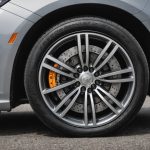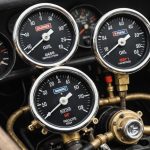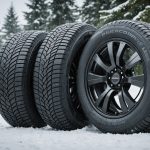Understanding Water Damage in Electrical Systems
Water damage can significantly impair the electrical systems of British off-road vehicles, potentially leading to complex and costly repairs. Exposure to moisture affects electrical components by causing short circuits, corrosion, and failure of electronic controls. In off-road settings, vehicles often encounter water crossings, muddy trails, and even heavy rainfall, making water exposure a frequent issue.
These environments present common scenarios where electrical components may come into contact with water. A vehicle’s wires, connectors, and control modules are all vulnerable, and the risk of water damage increases if these components are not properly protected. When water infiltrates electrical systems, it can disrupt circuitry and degrade the performance of critical vehicle functions.
Also to discover : Transform your british sports car: a complete guide to installing a high-performance braking system
One effective way to combat this is through ensuring proper sealing techniques that can prolong the vehicle’s lifespan. A robust sealing strategy involves the use of sealing materials tailored to the specific vulnerabilities of the vehicle model. Particular attention should be paid to vulnerable points such as connectors and control modules, as these are typically the first to suffer from water ingress.
Maintaining well-sealed electrical components will not only mitigate immediate water damage but also contribute to long-term vehicle reliability and performance. By understanding these challenges, vehicle owners can take proactive steps to safeguard their off-road adventures.
This might interest you : Ultimate guide to understanding and tuning oil pressure in british classic cars
Essential Materials for Sealing Electrical Systems
Selecting the right sealing materials is crucial for safeguarding electrical systems in British off-road vehicles. Among the most recommended waterproofing products are high-quality heat-shrink tubing and robust weatherproof connectors. These materials provide an extra layer of protection against moisture, which can lead to corrosion and impair vehicle performance.
Heat-shrink tubing is particularly effective as it conforms tightly around electrical connections, offering a seamless barrier against water ingress. This product is often lauded for its ability to resist abrasion, another common issue in off-road conditions. Likewise, weatherproof connectors are specifically designed to withstand harsh environments, ensuring long-lasting protection of vehicle circuits.
In addition to these sealing materials, corrosion inhibitors can be integrated into the system as a preventive measure. These inhibitors protect exposed metal surfaces from oxidation, significantly extending the service life of critical electrical components.
Incorporating a combination of these products not only enhances the durability of the electrical system but also minimizes the chances of unexpected failures. Vehicle owners who apply these methods can enjoy improved reliability and peace of mind on their off-road adventures. By investing in such preventative measures, one can effectively manage the challenges posed by water exposure.
Step-by-Step Guide to Sealing Electrical Systems
Understanding how to properly implement sealing procedures is crucial for effective off-road vehicle protection. Proper sealing ensures that electrical insulation is maintained, preventing water damage and prolonging the vehicle’s lifespan.
Preparing the Vehicle for Sealing
Before starting, ensure the workspace is clean and accessible to avoid contamination of sealants. Lay out all necessary sealing materials beforehand, ensuring they’re appropriate for your specific vehicle’s electrical insulation needs. Locate vulnerable points in the system such as connectors and control modules that are prone to water ingress.
Techniques for Sealing Connections
Focus on techniques that enhance the durability of electrical connections. Utilize heat-shrink tubing, which provides a tightly sealed barrier, ensuring comprehensive protection. This tubing is ideal for insulating wires and connectors, forming a protective shield against both moisture and abrasion.
For connectors, use weatherproof products specifically designed to resist off-road environmental hazards. Proper application of these products ensures reliable off-road vehicle protection by preventing short circuits and corrosion.
Resealing Maintenance and Inspection Tips
Incorporate a regular inspection schedule and maintenance practices to identify any breaches in seals early on. Regularly assess the condition of sealing materials and replace them as needed to maintain long-term effectiveness. Consistent checks help avoid unexpected water-related failures, preserving the integrity of your off-road adventures.
Troubleshooting Water-Related Electrical Issues
In British off-road vehicles, electrical troubleshooting is crucial when addressing potential water-related failures. Recognising the symptoms of water-damaged electrical systems is the first step in accurate diagnosis. Common indications include erratic behaviour of electronic controls, flickering lights, and malfunctioning gauges. These symptoms may suggest short circuits or corroded connectors, requiring immediate attention.
A systematic diagnosis guide can aid in identifying affected components. Start by inspecting wires and connectors, looking for signs of water penetration or visible corrosion. Utilise a multimeter to measure electrical continuity, ensuring circuits are functioning as expected. If non-conformities are detected, conduct further checks on control modules, as water infiltration could disrupt these critical systems.
When dealing with complex water-related failures, it’s often wise to seek professional help. Consulting an experienced technician ensures proper handling of sensitive electrical components and prevents further damage. Professionals possess the expertise to efficiently resolve issues, especially when specialized diagnostic equipment or intricate repairs are necessary.
For those attempting self-repairs, exercise caution. Employ comprehensive repair manuals and quality tools to avoid exacerbating the problem. Remember, thorough and precise diagnostics not only restore vehicle functionality but also enhance the reliability of subsequent off-road expeditions, offering peace of mind and improved performance.
Best Practices for Specific British Off-Road Vehicle Models
British off-road vehicles often face distinct challenges due to their varied designs, necessitating tailored solutions for effective water damage mitigation. Recognising model-specific vulnerabilities ensures optimal protection against moisture ingress, enhancing the vehicle’s reliability in challenging environments.
Each vehicle’s design uniquely affects its defense against water exposure. Sumps, wiring harnesses, and fuse boxes are common areas of vulnerability that vary across models. Prioritizing protection of these components with model-specific sealing techniques can prevent costly repairs and performance issues.
Customizing sealing methods involves understanding the vehicle’s layout and materials. For instance, vehicles predisposed to water ingress around the engine bay may require additional heat-shrink tubing applications or custom-engineered gaskets. These tailored solutions offer durability and mitigate the risk of corrosion and electrical failures.
Also, consulting model recommendations from manufacturers or off-road experts can be invaluable. They provide insights into best practices for specific vehicle models, ensuring that sealing techniques are both effective and compatible with the vehicle’s design.
By focusing on these tailored approaches, owners can enhance their vehicle’s resilience and reliability. This focus leads to a significant reduction in water exposure risks, ensuring safer and more enjoyable off-road adventures.











